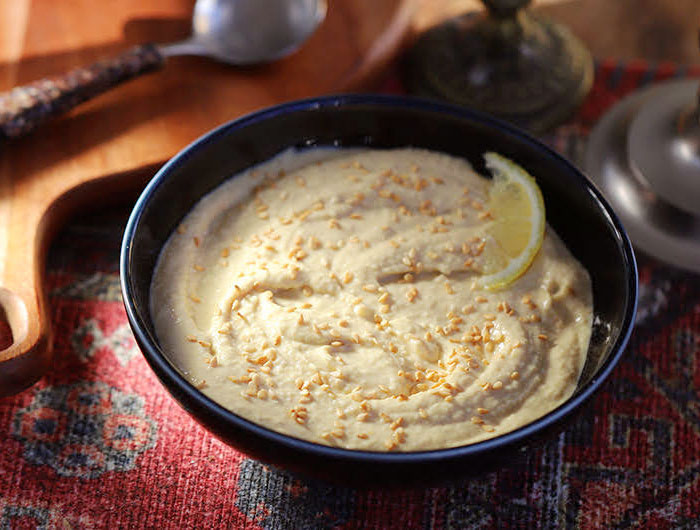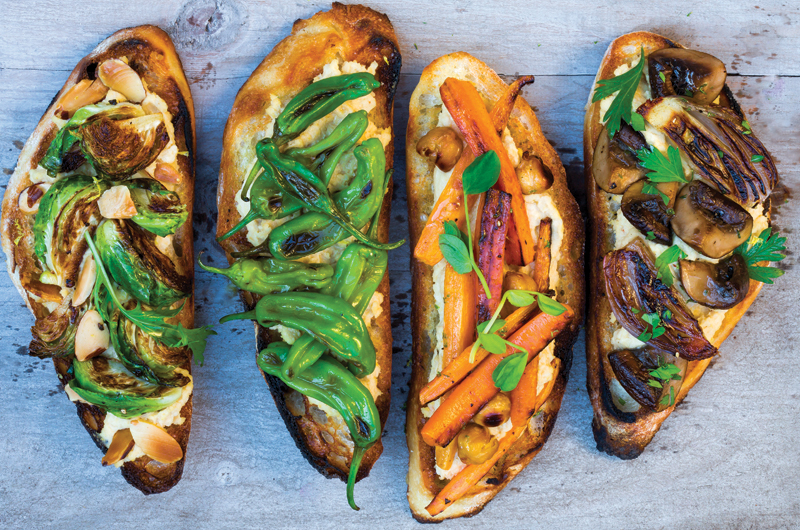Hummus has a lovely texture and flavor when made from freshly cooked chickpeas, but using canned chickpeas is a fine substitute. If you do cook the chickpeas yourself, save a little of the cooking water to make the hummus. I find that a little extra water added at the end of puréeing gives hummus a particularly light and fluffy texture.
Makes 2¼ cups
- 2 cups cooked chickpeas or canned chickpeas, drained and rinsed
- ¼ cup tahini (well mixed, see note)
- ⅓ cup freshly squeezed lemon juice, plus more to taste
- ¼ cup plus 2 tablespoons chickpea cooking liquid or warm water
- 2 tablespoons extra-virgin olive oil, plus more for drizzling
- 1 teaspoon freshly grated lemon zest (optional)
- 1½ teaspoons fresh garlic, minced
- 1 teaspoon kosher salt
- ¼ teaspoon ground cumin
- Cayenne
- Fresh cilantro or parsley, coarsely chopped (optional)
- Toasted sesame seeds (optional)
1. Put the chickpeas, tahini, the ⅓ cup lemon juice, ¼ cup of the cooking liquid or water, and 2 tablespoons of the olive oil into the bowl of a food processor and process until well combined. (It will still be a little rough.)
2. Scrape down the sides of the food processor and add the lemon zest (if using), garlic, salt, cumin, and a small pinch of cayenne and process again until smooth. Taste for lemon and salt, and add more if needed. Add the remaining 2 tablespoons of cooking liquid and process until light and fluffy. (Add a little more liquid or water if needed.)
3. To serve, scrape the hummus into a bowl, sprinkle with a pinch of cayenne, and drizzle with olive oil (about 1 to 2 tablespoons). Garnish with cilantro if desired. If making hummus ahead for toast or other use, scrape the hummus into a refrigerator container and drizzle with olive oil to cover. Cover and keep for up to 1 week in the fridge.
Note: If you are opening up a new jar of tahini and the solids are very hard to mix with the liquid, scrape everything out into a food processor or blender and process until well combined and smooth.








